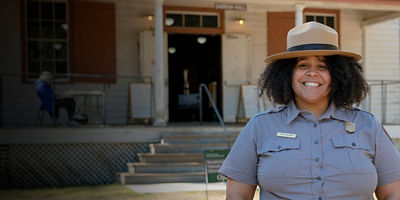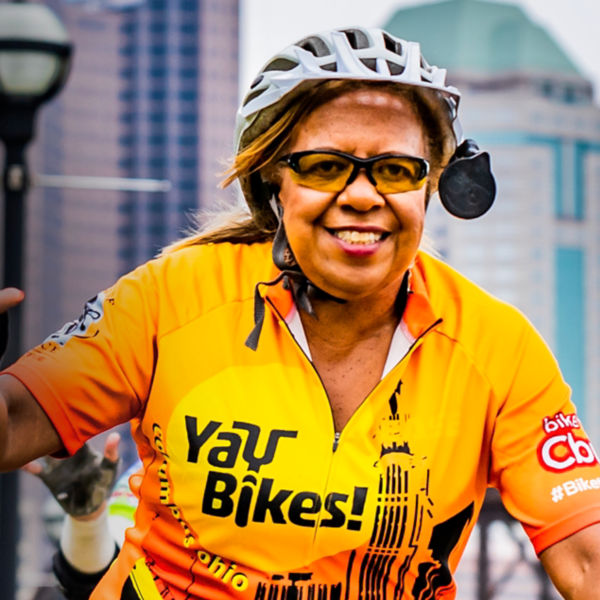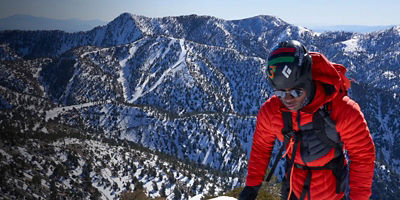PUBLIC LANDS: What made you start your Black History Ride?
TALIB ABDULLAHI: In the summer of 2020, after widespread demonstrations surrounding the murder of George Floyd, I started having a lot of conversations about racial injustices and milestones that had happened in Austin. A lot of people in my American Studies undergrad program at the University of Texas were well aware of these issues, but many of my peers weren’t. So, I decided to channel the energy that was out on the streets that June into an educational and uplifting bike ride. Our first ride visited 12 different locations with major historical significance for Austin’s Black community.
Why is it important?
As our city grows and evolves, many people have been priced out. Many of the generational homes of Black and Hispanic families in Austin have been sold to others, and those families live in the suburbs or farther away. There was a rich community here that strove for excellence. All the effort that these BIPOC communities put in is hardly visible anymore, and that isn’t right. It’s important that we acknowledge that our city’s community contributed a lot to the racial justice movement over the years, even if those community members and their descendants are no longer here.
Were you surprised with the turnout?
We estimated that we had over 400 people at our first ride, and even more at our second. Initially, I was thinking it would be impactful if a couple dozen people showed up. This went way beyond what I expected.
What type of riders attend?
We have riders of all abilities on our rides. Some haven’t ridden a bike in a few years, while others are regulars in the local racing scene. We intend for our rides to be accessible to just about anyone who is comfortable riding a bike for a few hours.
Why are bikes such a great vehicle for it?
Traveling by bike is one of the best ways to be outside. You’re able to cover a lot of ground, but still be well connected to the outside world around you. In Austin, our historical stops are a bit spread out. We’re able to connect all these histories together on bike, and physically take people to the exact locations where history happened. By doing this on bikes, we’re able to literally stand in the footsteps of these historical figures and share their stories.
Is there a particular Texas history story or figure that inspires you?
Jacob Fontaine’s story is really fascinating. He was born into slavery, was owned by a minister, and was the leading preacher for Black congregations before 1865. After emancipation, he reunited with his sister who he’d been separated from for 20 years. She gave him a gold dollar and he used it to start a newspaper in Austin. That newspaper was the first Black-owned publication on this side of the Mississippi and was an essential tool for the Black community in Austin. It helped teach literacy, informed the community of jobs, kept up with local news, and added many other benefits. Fontaine also continued to preach, helping start at least six different Black churches in the Austin area in his lifetime. His home is still standing in what was known as Wheatville, which is now known as West Campus, next to the University of Texas.
What lessons from the past do you hope riders carry with them?
There are a lot of lessons. Most importantly, the purpose of our rides is to add context to modern-day discussions of Black life in America. The examples of injustice we see happening have deep historical roots to the founding days of America. There are clear examples of the problems we see today buried in local history books all over the country, in almost every city. To better understand what’s happening today, we have to look back and understand the true nature of how we got here. I think by adding that context, we as a society can better understand each other and grow together.
How popular is the “self-guided” tour you put together in Austin?
Lots of folks have done the self-guided tour. It’s been great that the response has been so positive. Many folks will get their friends together to do the route.
How popular is it becoming elsewhere?
We’ve seen other similar events like this take off in Chicago and Atlanta. We’ve also had a ton of volunteers all over the country ask how they can start something similar in their own communities.
Do you have a ride planned for this year?
We sure do. In fact, we’ll actually be doing four rides this year, all in Austin. Our first is coming up on February 4 for Black History Month. The next will be a Black Women’s History Ride on March 14, during Women’s History Month. Our big annual Juneteenth Social Ride on June 17, which is always a party. We’ll also host a Black Music History Ride during October to celebrate the musical accomplishments made in our city.


























